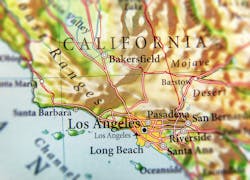California Seeks to Pilot APMs With FQHCs
California Gov. Gavin Newsom’s proposed budget for the next fiscal year includes reviving a proposal to implement an alternative payment model (APM) for Federally Qualified Health Centers (FQHCs) to incentivize delivery system and practice transformation at FQHCs starting in 2024.
In 2015, legislation authorized a three-year pilot program for county and community-based FQHCs. Under the proposed pilot, participating FQHCs would move away from the traditional volume-based prospective payment system (PPS) payment system to one that better aligns with the evolving financing and delivery of health services.
According to a Center for Health Care Strategies report, the Department of Health Care Services (DHCS) developed a pilot concept paper, incorporating details agreed upon by stakeholders across the state, and formally submitted the concept to the Centers for Medicare & Medicaid Services (CMS) in October 2016. However, DHCS was unable to implement the pilot as outlined because it did not receive federal approval.
But now the state is trying again. As proposed under the FQHC APM pilot, the PPS payment and wrap-around would be replaced by an upfront, clinic-specific capitation rate. Participating FQHCs would have a simplified payment process, replacing the previous billing approach and associated delays in payment. FQHCs would receive a comprehensive payment from the health plans on a monthly basis rather than having to wait until the end of the year for a supplemental payment, which is particularly beneficial to cash-strapped health centers.
The proposal said the payment reform would also allow FQHCs to operate more efficiently and deliver care in innovative ways that will expand primary and specialty care access. For example, FQHCs could provide non-traditional services not currently reimbursed under traditional volume-based PPS, including but not limited to: group visits, email visits, phone visits, community health worker contacts, case management, and care coordination across systems.
This proposed pilot was also expected to increase collaboration between the Medi-Cal managed care plans and participating FQHCs. While both would have additional requirements, both would also experience increased value from better coordination of care, thereby helping to reduce unnecessary utilization of services and improve beneficiary experience.
The Newsom administration says the FQHC proposal ties into the state’s Medicaid transformation efforts. California Advancing and Innovating Medi-Cal, also known as CalAIM, is a multi-year initiative by DHCS to improve the quality of life and health outcomes of the state’s population by implementing broad delivery system, program and payment reform across the Medi-Cal program. One goal of CalAIM is to move Medi-Cal to a more consistent and seamless system by reducing complexity and increasing flexibility. Transforming reimbursement methodologies for FQHCs will reduce complexity and increase flexibility.
This proposal would allow DHCS to implement a federally allowable APM for FQHC reimbursement no sooner than Jan. 1, 2024. Through a series of state-led stakeholder meetings in 2021, DHCS said, significant progress was made on preparations to implement an APM. Updates to existing law will support DHCS in its submission of a State Plan Amendment for federal approval of the APM and continued preparation for implementation in 2024.


